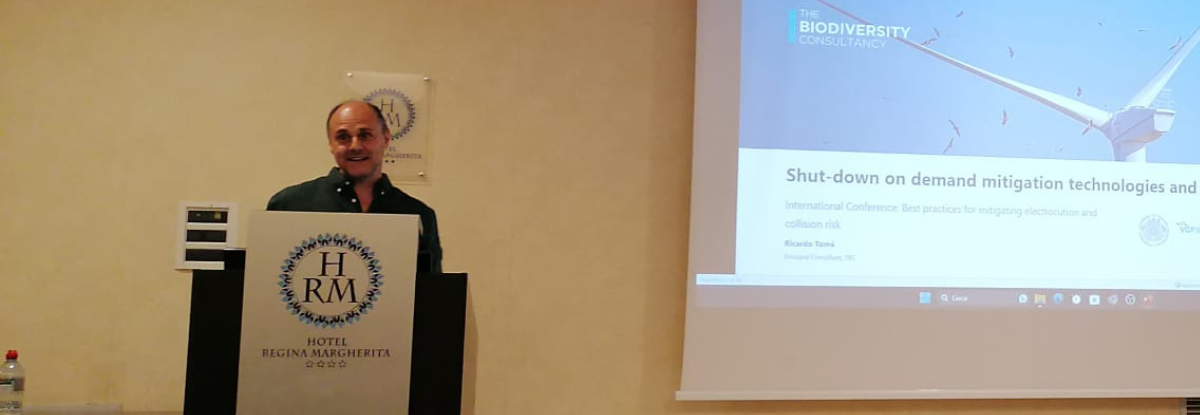Shutdown on demand tech and ops saves birds from wind turbine collisions
Principal Consultant Ricardo Tomé presented at the Vulture Conservation Foundation’s International Conference: Best practices for mitigating electrocution and collision risk, Cagliari, Sardinia.

Electrocution, and collision with power lines and wind turbines, cause the death of millions of birds every year and are also among the main causes of mortality for birds of prey. On 23 and 24 May, the Vulture Conservation Foundation convened researchers and conservation professionals to review best practices that reduce the threat.
Principal Consultant Ricardo Tomé was there to present on the potential and practicalities of shutdown on demand (SDOD) mitigation technologies and operation. His talk included a comprehensive review on the operational aspects of SDOD and its different typologies, including observers-led and technology-supported (e.g., radars or cameras).
Ricardo explains:
“At least some species of vulture are not sensitive to the presence of turbines, so do not avoid them and are very susceptible to collisions. Vulture manoeuvrability is relatively low and strong winds can push them easily to wind turbines when trying to gain height. But they are big birds and good targets for observers, camera and radar detection, and frequently their activity patterns are predictable, so SDOD operations and effort can be successful in avoiding collisions.
One study in the Strait of Gibraltar using SDOD found a 61.7% reduction in mortality of soaring birds and a 92.8% reduction in mortality of Griffon Vultures, even though their number increased more than 7-fold during the study period. The resulting shutdown time was equivalent to a reduction of only 0.51% in energy production. Other studies support good results with even lower impact on energy production.
SDOD technologies are one of the most effective ways to reduce collision impacts from birds from operating wind farms. We recommend they are incorporated early in the financing plan of a wind farm in bird-sensitive areas. Depending on site and shutdown criteria, a combination of different technologies and observers may deliver the best results. Nonetheless, the evolution in machine learning and AI suggests fully automated technology may be used in more use cases in the future.
In spite of its potential efficiency SDOD should not, however, be used to permit wind energy development in all situations. Adequate early risk screening should be conducted as site and case-specific variables may determine that a project should not be developed, as it may threaten biodiversity or not be feasible due to an excessive demand of shutdown periods.”
The Conference gathered experts from different parts of Europe and focused mostly on impacts on vultures and other raptors. Apart from presentations on the successful case of the LIFE projects developed in Sardinia to recover the island’s Griffon Vulture population, the Conference dealt with the main impacts to birds from power lines and wind farms, and discussed the state-of-the-art mitigation approaches.
All sessions were streamed live through Facebook channel of the LIFE safe for Vultures, and are still available at: https://www.facebook.com/vulturesardinia
The conference was organised in the framework of the LIFE Safe for Vultures project, co-financed by the EU’s LIFE Programme.
Categories: Renewable Energy, Company news, Biodiversity Strategy, The Mitigation Hierarchy
Make Nature Your Business
Find out how you can make nature your business.
